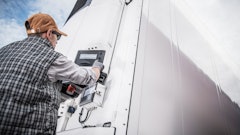
Netradyne introduced its cutting-edge Driver Drowsiness with Driver Monitoring System (DMS) Sensor, which can identify early-stage drowsiness.
“Despite 95% of Americans recognizing the danger of drowsy driving, a majority still engage in this risky behavior, according to National Sleep Foundation (NSF) data. The risk is compounded for those whose livelihoods depend on driving,” says Adam Kahn, president at Netradyne. “We put drivers first, so we had to get this right by developing a precise sensor to avoid false alerts without compromising drivers’ road safety. Unlike other offerings on the market that come with subjectivity, Netradyne’s DMS Sensor is grounded in science that's objective and measurable. Our comprehensive solution will give drivers and safety managers peace of mind that drowsy driving incidents will be prevented.”
Key takeaways:
- This innovation comes ahead of national Drowsy Driving Prevention Week, Nov. 3-9.
- The sensor works to detect both early and late stages of drowsiness as defined in research in academic literature. This allows for early warning to drivers and predicts future acute drowsiness. In addition, the sensor is sensitive to work under low light at night and can detect drowsiness even if the driver is wearing sunglasses.
- This solution enables timely and precise alerts by accurately detecting subtle micro-behaviors indicative of drowsiness like microsleeps (eye closures), blink measurements, and percentage of eye closure over time (PERCLOS) that can objectively detect the onset of drowsiness. Additionally, its ability to discern varying levels of drowsiness allows for more tailored and urgent responses. Optimized installation placement and seamless integration with the Driver•i® system, complete with multi-camera views, contribute to a comprehensive and reliable driver monitoring solution.
- In addition to in-cab views, the solutions utilize outward-facing cameras to assess road behaviors like lane departure that may contribute to detecting drowsiness. Using the data gathered, managers can better understand drowsy driving behavior patterns, helping inform and focus coaching sessions and develop adjusted schedules based on data, alleviating the potential for risky situations.




















